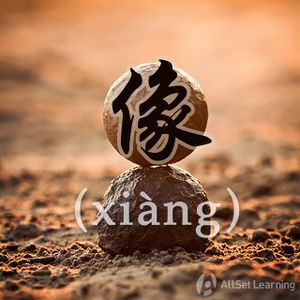Difference between revisions of "Expressing "it seems" with "haoxiang""
ViktorMugli (talk | contribs) |
|||
| Line 45: | Line 45: | ||
{{Basic Grammar|好像|B1|好像……|小 猫 <em>好像</em> 饿 了。|grammar point|ASG3ROPY}} | {{Basic Grammar|好像|B1|好像……|小 猫 <em>好像</em> 饿 了。|grammar point|ASG3ROPY}} | ||
| + | {{Rel char|好}} | ||
| + | {{Rel char|象}} | ||
{{Used for|Observing}} | {{Used for|Observing}} | ||
{{POS|Verbs}} | {{POS|Verbs}} | ||
{{Subprop|Verbs}} | {{Subprop|Verbs}} | ||
Revision as of 08:50, 25 September 2012
-
Level
-
Similar to
-
Used for
-
Keywords
To express "seems," the word 好像 (hǎoxiàng) is used.
Structure
The structure for this is:
Subject + 好像 + [Observation]
Note that if this structure is used without a subject, it has the meaning of "it seems that..." in English. This could then be followed by an entire statement.
Examples
Some examples:
- 他们 好像 是 朋友 。
- 小 猫 好像 饿 了。
- 外面 好像 有 声音!是 不 是 小偷?
- 好像 要 下雨 了。
See also
Sources and further reading
Books
- Practicing HSK Grammar (语法精讲精炼) (pp. 41) →buy
- Basic Patterns of Chinese Grammar (pp. 101) →buy
- Boya Chinese Elementary Starter 1 (博雅汉语初经起步篇) (pp. 157) →buy



